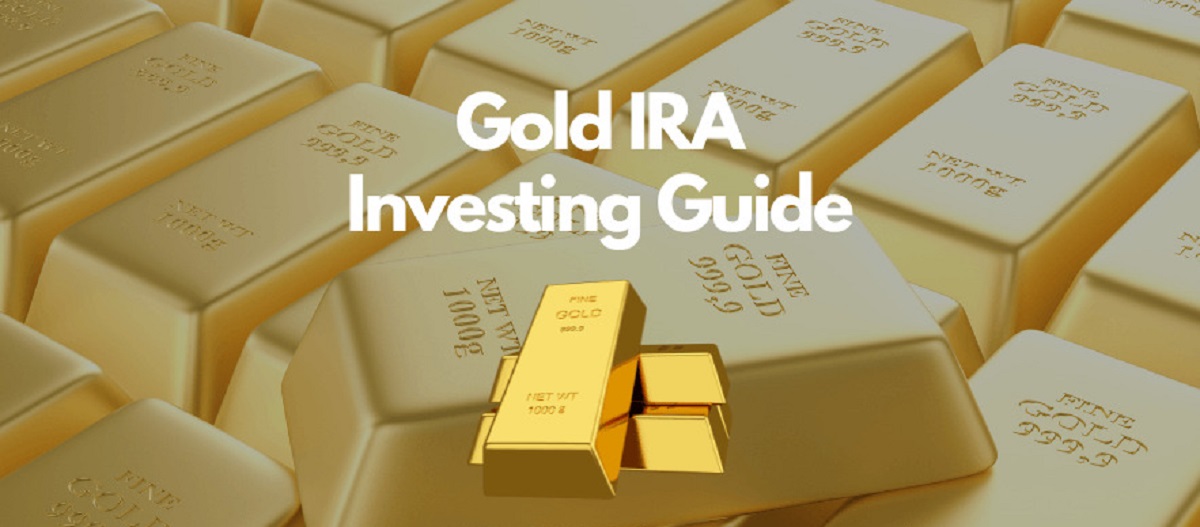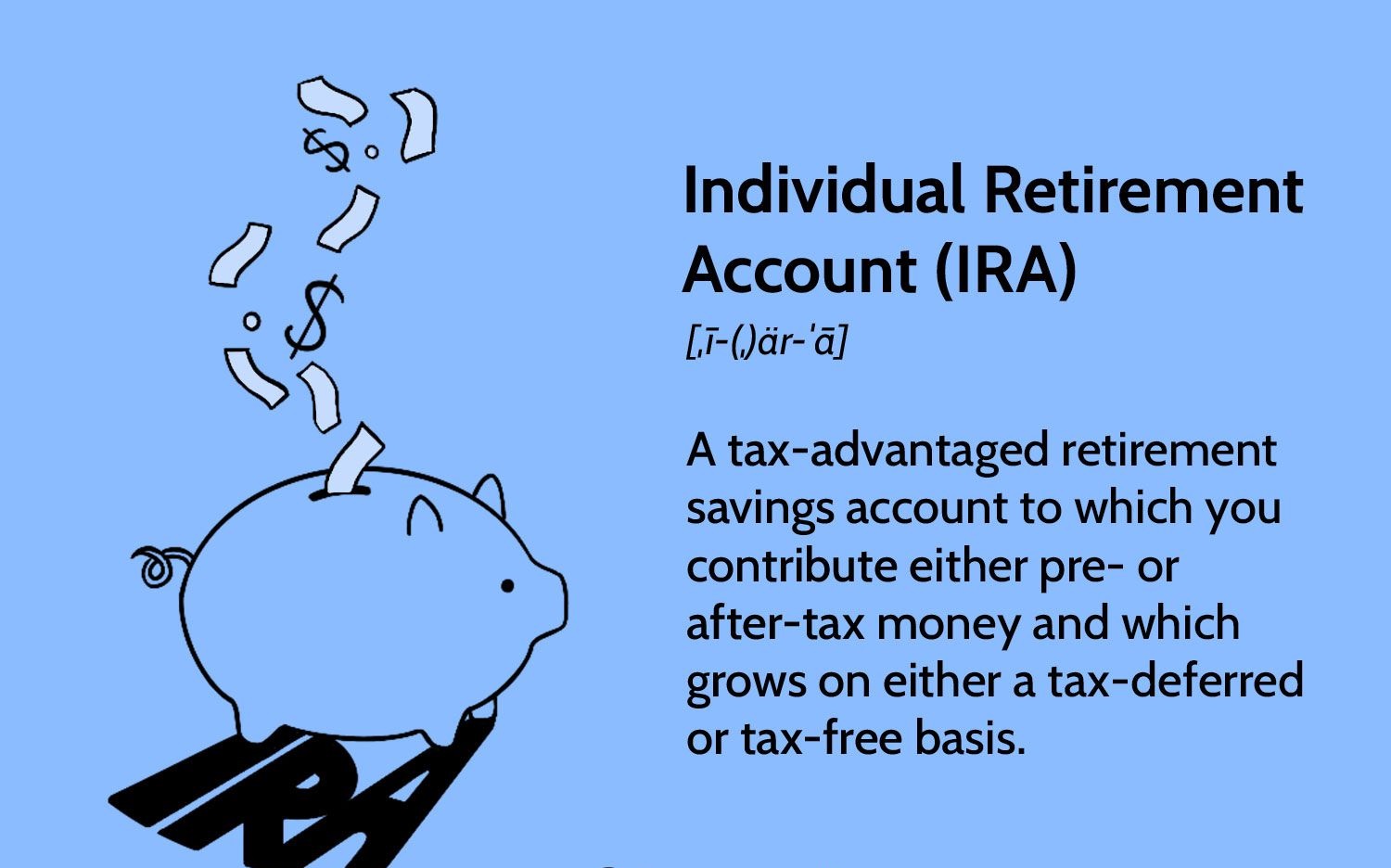Introduction
Welcome to our guide on how to use your Individual Retirement Account (IRA) to hold physical gold investments. In today’s unpredictable economic climate, diversifying your investment portfolio is more important than ever. While traditional assets like stocks and bonds have their place, many investors are looking for alternative options to protect and grow their wealth.
An IRA, or Individual Retirement Account, is a tax-advantaged investment vehicle that allows individuals to save for retirement. Unlike a regular brokerage account, an IRA offers unique tax benefits, such as tax-deferred growth or tax-free withdrawals. You can choose from several types of IRAs, including Traditional IRAs, Roth IRAs, SEP IRAs, and more, depending on your eligibility and personal circumstances.
One increasingly popular option is to invest in physical gold through an IRA. Holding physical gold can offer a level of stability and security that other assets may not provide. Gold has long been seen as a hedge against inflation and a store of value during times of economic uncertainty.
By including physical gold in your IRA, you can diversify your retirement savings and potentially benefit from the long-term appreciation of this precious metal. In this guide, we will explore the benefits of using an IRA to hold physical gold investments, the different types of gold investments available, how to set up a gold IRA, considerations when choosing a custodian, the rules and regulations governing gold IRAs, and the risks associated with holding physical gold in an IRA.
Whether you’re new to investing or a seasoned investor looking to add gold to your retirement strategy, this guide will provide you with the necessary information to make informed decisions. So, let’s dive in and discover how you can use your IRA to hold physical gold investments!
What is an IRA?
An Individual Retirement Account (IRA) is a tax-advantaged investment vehicle that allows individuals to save for retirement. It was established by the U.S. government to encourage people to secure their financial future by setting aside funds for retirement. IRAs provide individuals with the opportunity to invest in a wide range of assets, including stocks, bonds, mutual funds, real estate investment trusts (REITs), and even precious metals like gold.
There are several types of IRAs, each with its own unique set of rules and benefits. The most common types include Traditional IRAs and Roth IRAs.
A Traditional IRA allows individuals to make tax-deductible contributions up to a certain annual limit. The contributions and any earnings within the account are tax-deferred, meaning you don’t pay taxes on them until you start withdrawing funds during retirement. At that point, withdrawals are taxed as ordinary income.
On the other hand, a Roth IRA does not offer tax-deductible contributions. Instead, contributions are made with after-tax dollars. The advantage of a Roth IRA is that the earnings and withdrawals are tax-free, provided that certain conditions are met. This can be particularly beneficial for individuals who anticipate being in a higher tax bracket during retirement.
Both Traditional and Roth IRAs have their own set of eligibility requirements and contribution limits. It’s important to consult with a financial advisor or tax professional to determine which type of IRA is best suited for your specific situation.
One of the main benefits of an IRA, regardless of the type, is the potential for tax advantages. By contributing to an IRA, you can potentially reduce your taxable income for the current year and defer paying taxes on the earnings until retirement when you may be in a lower tax bracket.
It’s worth noting that IRAs have contribution limits that are set by the Internal Revenue Service (IRS). These limits can change from year to year, so it’s crucial to stay informed about the current limits to maximize your contributions.
Now that you have a basic understanding of what an IRA is, let’s explore the advantages of using an IRA to hold physical gold investments.
The Benefits of Using an IRA to Hold Physical Gold Investments
Investing in physical gold through an Individual Retirement Account (IRA) can offer a multitude of benefits for individuals looking to diversify their retirement portfolio and protect their wealth. Here are some key advantages of using an IRA to hold physical gold investments:
- Tax Advantages: One of the primary benefits of using an IRA to hold physical gold is the potential for tax advantages. Depending on the type of IRA you have, contributions may be tax-deductible, or earnings and withdrawals may be tax-free. This can provide significant tax savings, especially over the long term.
- Diversification: Holding physical gold in an IRA allows you to diversify your retirement portfolio beyond traditional assets like stocks and bonds. Gold has a proven track record of being a reliable store of value and a hedge against inflation. By adding physical gold to your IRA, you can potentially reduce risk and enhance the overall stability of your investment portfolio.
- Protection Against Economic Uncertainty: Gold has a historical reputation for maintaining its value during times of economic uncertainty. In times of stock market volatility, political instability, or inflationary pressures, the value of physical gold has often risen. Having gold in your IRA can provide a level of protection against these uncertainties and help preserve your wealth.
- Portfolio Insurance: Physical gold can serve as a form of portfolio insurance. Its value tends to move independently of other asset classes, such as stocks and bonds. This means that when stock markets decline, gold prices may rise, helping to offset losses in other parts of your portfolio. Including gold in your IRA can provide a potential insurance policy against market downturns.
- Potential for Growth: Over the long term, physical gold has the potential to appreciate in value. While it may not provide significant short-term gains, gold has historically demonstrated steady growth over time. By holding physical gold in your IRA, you can participate in this potential growth and potentially increase the value of your retirement savings.
It’s important to note that while there are many benefits to using an IRA to hold physical gold, it’s essential to understand and comply with the rules and regulations governing gold IRAs. Working with a reputable custodian and staying informed about any changes in the tax code or regulations is crucial to ensure that you maximize the benefits while meeting all legal requirements.
Now that we’ve explored the benefits of using an IRA to hold physical gold investments, let’s delve into the different types of physical gold investments available for your IRA.
Types of Physical Gold Investments
When it comes to investing in physical gold through an Individual Retirement Account (IRA), there are several options available. Here are the main types of physical gold investments you can consider for your IRA:
- Gold Coins: Gold coins are one of the most popular choices for physical gold investments in IRAs. These coins are usually produced by government mints and carry a face value. Some well-known examples include American Gold Eagle, Canadian Gold Maple Leaf, and South African Krugerrand. The value of gold coins is typically based on their weight and purity, with a premium added for their collectibility and craftsmanship.
- Gold Bars: Gold bars, also known as gold ingots or gold bullion bars, are another option for physical gold investments. These bars come in various sizes, typically ranging from one gram to one kilogram or more. The value of gold bars is primarily determined by their weight and purity, making them a straightforward and cost-effective investment option.
- Gold Rounds: Gold rounds are similar to gold coins in appearance but do not carry any legal tender value. They are often privately minted and offer a more affordable option for investors looking to acquire physical gold. Like gold coins, gold rounds are valued based on their weight and purity.
- Gold Certificates: Gold certificates are a form of paper representation of physical gold. They are issued by banks or financial institutions and allow investors to hold gold without physically possessing it. Gold certificates provide convenience and ease of transfer, but it’s important to note that they may not offer the same level of security and tangibility as physical gold.
- Gold ETFs or Exchange-Traded Funds: While not technically a physical gold investment, gold ETFs can provide exposure to the price movement of gold. These funds typically hold physical gold bullion or track the price of gold through futures contracts. Investing in gold ETFs within an IRA allows you to benefit from gold’s performance without the need to store and secure physical gold.
When choosing the type of physical gold investment for your IRA, it’s crucial to consider factors such as liquidity, cost, storage requirements, and personal preferences. Consulting with a reputable financial advisor or precious metals expert can help you navigate the various options and make an informed decision based on your individual goals and risk tolerance.
Now that we’ve explored the different types of physical gold investments, let’s move on to learn how to set up a gold IRA.
How to Set Up a Gold IRA
Setting up a gold Individual Retirement Account (IRA) involves several steps to ensure that your IRA is compliant with IRS regulations and that you can start investing in physical gold. Here’s a step-by-step guide on how to set up a gold IRA:
- Educate Yourself: Start by familiarizing yourself with the rules and regulations surrounding gold IRAs. Understand the eligibility requirements, contribution limits, and any restrictions on the types of gold that can be held in an IRA. This knowledge will help you make informed decisions throughout the process.
- Select a Custodian: Choose a reputable custodian who specializes in self-directed IRAs that allow for investing in physical gold. Not all custodians offer gold IRA services, so do thorough research and consider factors such as reputation, fees, customer service, and experience in handling precious metals IRAs.
- Open a Self-Directed IRA Account: Work with your chosen custodian to open a self-directed IRA account. This type of IRA gives you the flexibility to invest in a broader range of assets, including physical gold.
- Roll Over or Transfer Funds: If you have an existing Traditional IRA or employer-sponsored retirement account, you can either roll over or transfer funds to your newly opened self-directed IRA account. This ensures that the funds are available for investing in physical gold.
- Choose a Gold Dealer: Select a reputable gold dealer who is approved by your custodian. The dealer should specialize in providing IRS-approved gold bullion or coins for IRAs. Ensure that the dealer provides proper documentation and ensures the gold’s authenticity and purity.
- Purchase Physical Gold: With the help of your custodian and chosen dealer, make the purchase of physical gold for your IRA. The custodian will provide instructions on how to fund the purchase through your self-directed IRA.
- Store the Gold: Once you have purchased the physical gold, your custodian will arrange for secure storage. The IRS requires that the gold be held in an approved depository that meets specific storage and insurance requirements. This ensures the safety and integrity of your investment.
Throughout the process, it’s important to consult with your custodian and follow their guidance to ensure IRS compliance and seamless execution of the gold IRA setup. Keep in mind that each IRA provider may have specific procedures and requirements, so staying in communication with them is crucial.
Now that we’ve covered how to set up a gold IRA, let’s move on to the next section, which focuses on choosing a custodian for your gold IRA.
Choosing a Custodian for Your Gold IRA
Choosing the right custodian is a critical step when it comes to setting up and managing a gold Individual Retirement Account (IRA). The custodian plays a vital role in facilitating the purchase, storage, and reporting requirements for your physical gold investments. Here are some factors to consider when selecting a custodian for your gold IRA:
- Experience and Reputation: Look for a custodian with extensive experience in handling precious metals IRAs. Check their reputation by reading reviews, testimonials, and independent ratings. A custodian with a strong track record and a positive reputation is more likely to provide reliable services.
- IRA Specialization: Ensure that the custodian specializes in self-directed IRAs that allow for investing in physical gold. Not all custodians offer this service, so it’s crucial to choose one that understands the unique requirements and regulations surrounding gold IRAs.
- Storage Options and Security: Inquire about the custodian’s storage options and their associated security measures. The custodian should work with secure and approved depositories that offer allocated storage for your physical gold. Additionally, they should provide insurance coverage for the stored gold to protect your investment.
- Fees and Costs: Understand the custodian’s fee structure and any associated costs. Compare the fees charged by different custodians to ensure that they are reasonable and transparent. Consider both the initial setup fees and ongoing annual fees to assess the overall cost of using their services.
- Customer Service: Evaluate the custodian’s customer service and responsiveness. A reputable custodian should have knowledgeable and professional staff who can answer your questions, provide guidance, and address any concerns promptly. Customer service is important for a smooth and hassle-free gold IRA experience.
- Educational Resources: Determine if the custodian offers educational resources or guidance on investing in gold IRAs. They should be able to provide you with educational material, investment insights, or access to expert advisors who can assist you in making informed decisions regarding your gold IRA.
- Reporting and Compliance: Ensure that the custodian is well-versed in IRS reporting requirements and compliance for gold IRAs. They should have the necessary systems in place to assist with annual reporting and provide accurate documentation as needed.
It’s important to conduct thorough research and consider multiple custodians before making a final decision. By comparing their offerings, reputation, fees, and other factors, you can choose a custodian that aligns with your investment goals and provides the necessary support for managing your gold IRA.
Now that we’ve covered choosing a custodian, let’s move to the next section, which focuses on the rules and regulations governing gold IRAs.
Rules and Regulations for Gold IRAs
Investing in gold through an Individual Retirement Account (IRA) comes with specific rules and regulations that must be followed to maintain the tax advantages of the account. Understanding and adhering to these rules will ensure that your gold IRA remains compliant. Here are the essential rules and regulations for gold IRAs:
- Types of Allowed Gold: The IRS allows certain types of gold investments for IRAs, including gold coins that meet specific criteria, such as the American Gold Eagle, Canadian Gold Maple Leaf, and South African Krugerrand. Additionally, gold bars or rounds that meet the required purity standards are also eligible. It’s important to consult IRS guidelines or work with a knowledgeable custodian to ensure the gold you purchase for your IRA meets these requirements.
- Storage Requirements: The IRS requires that physical gold held in an IRA be stored in an approved depository. The depository should meet certain security and insurance standards to safeguard your investment. The gold must be segregated and allocated specifically to your IRA to maintain its tax-advantaged status.
- Prohibited Transactions: Certain transactions involving your gold IRA are prohibited by the IRS. For example, you cannot personally hold or store the gold in your possession. Any personal use or benefit from the gold within the IRA is also strictly prohibited, as is the purchase of gold from a disqualified person, such as a close relative or your IRA custodian.
- Required Minimum Distributions (RMDs): Just like with any IRA, a gold IRA is subject to RMDs once the account owner reaches the age of 72 (or 70½ if born before July 1, 1949). The RMD amount is based on the account balance and the account owner’s life expectancy. However, if you have a Roth IRA, there are no RMDs during the account owner’s lifetime.
- Taxation: The tax treatment of a gold IRA depends on the type of IRA you have. With a Traditional IRA, contributions may be tax-deductible, and withdrawals are subject to ordinary income tax. In a Roth IRA, contributions are made with after-tax dollars, and qualified withdrawals are tax-free. It’s crucial to consult with a tax advisor to understand the specific tax implications of your gold IRA.
- Reporting Requirements: You are required to report the value of your gold IRA on your annual tax returns, even if no distributions were made during the year. Your custodian should provide the necessary documentation and reporting to assist with accurate IRS reporting.
It’s important to note that IRS regulations and guidelines surrounding gold IRAs can change. It’s advisable to stay updated with any changes and work closely with a reputable custodian and tax professional who can provide guidance and ensure compliance with the latest rules.
Now that we’ve covered the rules and regulations for gold IRAs, let’s move on to the next section, which discusses the risks and considerations associated with holding physical gold in an IRA.
Risks and Considerations When Holding Physical Gold in an IRA
While holding physical gold in an Individual Retirement Account (IRA) can offer numerous benefits, it’s essential to be aware of the potential risks and considerations involved. Here are some key factors to consider when holding physical gold in an IRA:
- Market Volatility: Like any investment, the price of gold can experience significant fluctuations. It’s important to remember that gold prices can be influenced by various factors, including economic conditions, geopolitical events, and investor sentiment. The value of your gold IRA can go up or down based on these market forces.
- Liquidity: Physical gold may not be as easily convertible to cash as other types of investments. When you decide to sell your gold holdings, there may be delays or additional costs associated with converting it into cash. The liquidity of your gold IRA can depend on market conditions and the availability of buyers.
- Storage and Security: Storing physical gold requires careful consideration. While custodians arrange for secure storage in approved depositories, there are costs involved, including storage fees and insurance premiums. Additionally, there are risks associated with the physical transportation and storage of gold, such as theft or damage.
- Custodial Risks: Choosing the right custodian is crucial to the success of your gold IRA. It’s important to work with a reputable and experienced custodian to minimize the risk of fraud or mismanagement. Conduct thorough due diligence and research on custodians to ensure they have a strong track record and are compliant with IRS regulations.
- Regulatory Changes: The rules and regulations governing gold IRAs can change over time. It’s important to stay updated with any regulatory changes that may impact your gold IRA. Working closely with a knowledgeable custodian and staying informed about IRS guidelines will help you navigate any changes and ensure ongoing compliance.
- Diversification: While gold can be a valuable addition to a diversified investment portfolio, it’s important to remember the importance of diversification within your gold IRA itself. Just as with any investment, spreading your investments across different types of gold assets can help mitigate risk and increase the potential for returns.
It’s crucial to thoroughly assess your risk tolerance, investment objectives, and personal circumstances before deciding to hold physical gold in an IRA. Consider consulting with a financial advisor or professional who specializes in precious metals investments to ensure that a gold IRA aligns with your overall financial goals.
By being aware of the risks and considering these factors, you can make informed decisions and proactively manage the risks associated with holding physical gold in your IRA.
Now that we’ve covered the risks and considerations, let’s move on to the concluding section of this guide.
Conclusion
In conclusion, using an Individual Retirement Account (IRA) to hold physical gold investments can offer a range of benefits for investors looking to diversify their portfolios and protect their wealth. Gold has historically been considered a safe haven and a store of value, making it an attractive option for long-term wealth preservation.
Setting up a gold IRA involves understanding the rules and regulations, selecting a reputable custodian, and choosing the right type of physical gold investments. By following the necessary steps and working with knowledgeable professionals, you can navigate the process smoothly and maximize the potential benefits of a gold IRA.
Some of the key advantages of using an IRA to hold physical gold include potential tax advantages, portfolio diversification, protection against economic uncertainty, and the potential for long-term growth. However, it’s important to consider the risks associated with market volatility, liquidity, storage, and regulatory changes.
When selecting a custodian for your gold IRA, consider their experience, reputation, storage options, fees, customer service, and compliance with IRS regulations. Conduct thorough due diligence to ensure the custodian is trustworthy and capable of meeting your investment needs.
As with any investment decision, it’s important to carefully assess your risk tolerance, investment goals, and overall financial situation before committing to a gold IRA. Working with a financial advisor or precious metals expert can provide valuable guidance to help you make informed decisions.
In conclusion, a gold IRA can be a powerful tool for diversification and wealth preservation. By understanding the intricacies of gold IRAs, exercising caution, and taking appropriate measures, you can potentially benefit from the stability and growth potential of physical gold within the framework of your retirement savings.

























